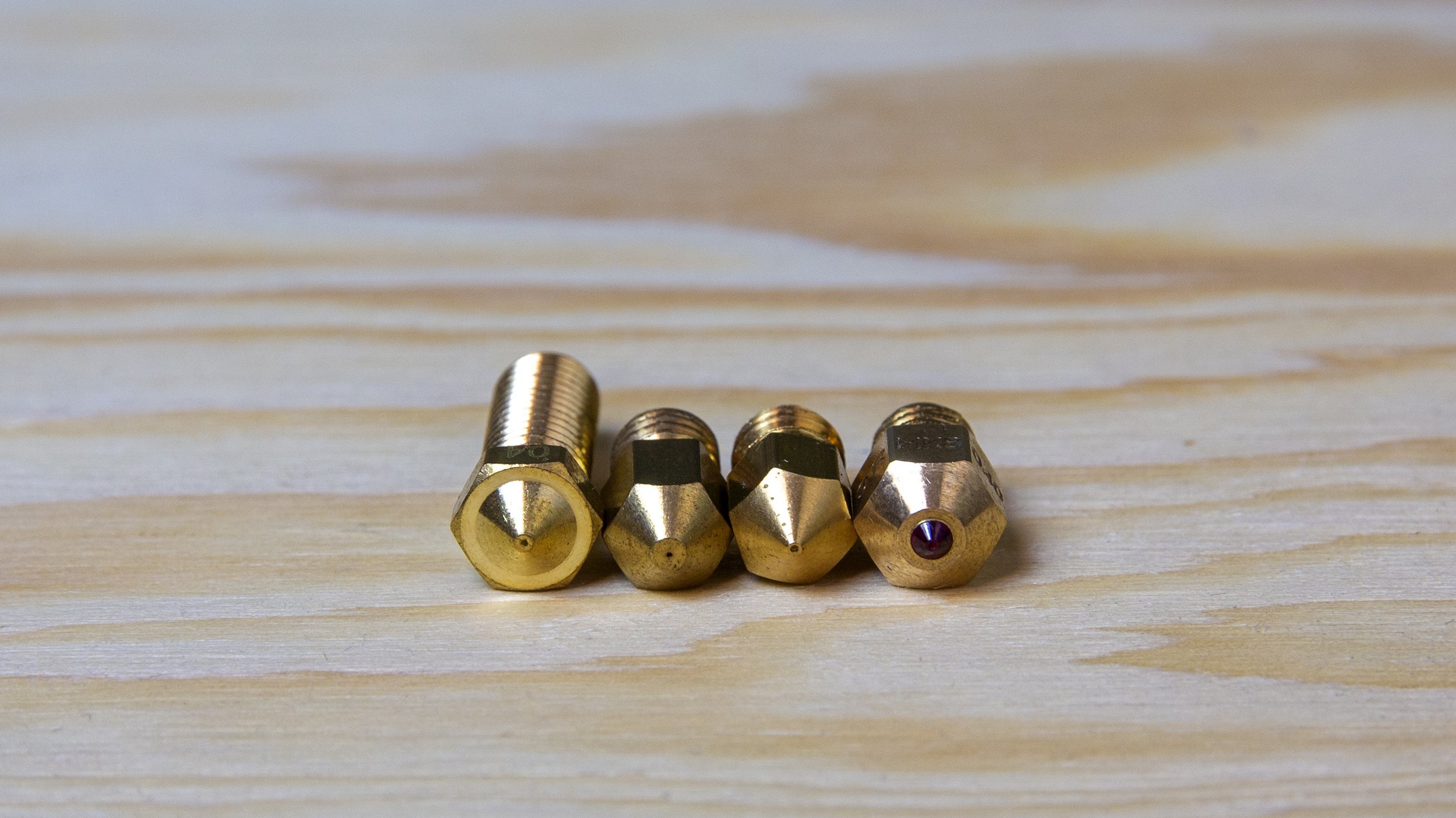
How to identify 3d printer nozzle type
When swapping nozzles it can sometimes be difficult knowing what type of nozzle you need. Is it a MK8, MK9 or a MK10 for example?
This guide will help you identify what nozzle you have and should replace it with.
Does your 3D Printer brand specify nozzle type?
The first step is to try to look up your 3D Printers specifications.
Most common brands have a clear label of type of extruder (which in turn almost always specify type of nozzle).
Things to look out for is the “MK” or Mark, followed by a number.
MK6, MK8 and MK10 are the common extruders in budget or open source 3D printers.
If you have a Prusa Mk3S+ for example, it uses a E3D V6 Hotend and the “V6” actually tells you what nozzles fit (E3D V6 Nozzles).
E3D is quickly becoming standard on new printers from Prusa Research or Creality as an example, and those are not tied to the “Mark X” extruders.
Image above; E3D V6 Nozzle Type Standard
Figuring out what type of nozzle you have
Identifying what type of nozzle you have is easiest with a caliper, or this handy 3D print I designed which helps you identify MK6, 7, 8, 9 and 10 nozzle specifications.
The main difference between MK-series nozzles is that MK6, MK7, MK8 uses M6-threads while MK10 uses M7.
The wider M7 thread allows for more space internally, to fit a good PTFE tube or just keeping more brass mass to transfer heat more evenly.
You can measure the thread with a caliper, by measuring the outside of the thread, as shown in the image.
Nozzle Height
Nozzles are also different in overall height and although you should always re-calibrate your bed/Z-stop depending on printer, to get the new nozzle perfectly tuned. With that said, you should verify if your MK10 nozzle is 12, 12,5 or 13mm long.
It’s important that your thread-height is correct. Otherwise you can risk too long or short nozzles, which leaves open space inside for filament to leak, or nozzles driving into your print bed.
More unique standards like e3D Volcano or SuperVolcano are clearly very different and much longer than “regular nozzles”.
Identifying the nozzle material and special features.
Most nozzles are made out of brass and have a shiny gold appearance. It’s of course only brass. Brass vary in quality and the cheapest nozzles often wear out the fastest. When they wear out, the nozzle hole diameter grows and the inside gets rougher and clogs more often.
Hardened nozzles that resist more abrasive materials for longer come in different colors, often stainless steel or darker colors.
You can even get really hard nozzles that use a ruby at the tip to resist wear for longer when using incredible abrasive materials like carbon fiber, that would otherwise tear up the inside of a brass nozzle in a print or two.
Finally, a newcomer to their market is Bondtech CHT nozzle, that looks like a normal nozzle on the outside, but has a special entry for the filament. This helps heat more evenly and create better flow. I doubt this is one of the nozzles that came installed on your new no-name-brand 3D-printer, but if it did, these 3 holes is a clear identifier.
The Ruby Nozzle can be found to fit most types of Extruders are resist wear incredible well.
Nozzle head shape and angles
There are many different nozzle geometries even within the same thread standard.
You can find nozzles with a tiny flat area, a low or high angle on the nozzle tip, and of course very small nozzle tips.
They all have differences on how they cool, heat, allow material to stick to them or not, but in general, as long as the overall length is the same, and head-diameter is roughly the same, you’re all set, as long as you prefer their characteristics.
Keep track of the numbers when ordering nozzles.
When ordering a new nozzle you do want to keep track of a few numbers.
Firstly, the MK, or “version” of Extruder its relevant for.
Secondly what filament you run. 1.75mm or 2.85mm have different nozzle openings in most cases.
Lastly you also want to buy the correct nozzle diameter (which is the end diameter where the filament comes out).
0,4mm is the most common nozzle diameter but 0.6 and 0.8mm are growing more popular as they can increase strength and/or speed depending on you machine. There are also smaller diameters for finer details, but these are much more prone to clogging and takes much longer to print with.
Some manufacturers like e3D Have special markings on the side that indicates what diameter you have. e3D V6 have 6 sides, and the amount of indentations explains it’s geometry. 3 dots is a 0,4mm nozzle. While 4 dots is a 0,6mm nozzle.
Hopefully you have now gotten a bit further in finding out what your next nozzle is.
If you’d like you can use affiliate links below to purchase your next Nozzle.











